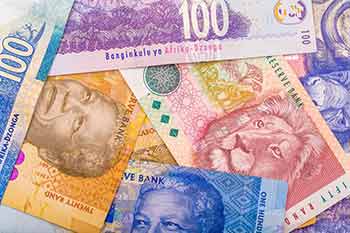The Euro to South African Rand (EUR/ZAR) exchange rate weakened on Thursday following the release of stronger than forecast mining production data out of South Africa.
The Euro to South African Rand (EUR/ZAR) exchange rate fell to a session low of 12.6818
The single currency has been steadily weakening over the coming months as the Quantitative-easing programme introduced by the European Central Bank sent it falling against many of its peers.
The Rand advanced further after Statistics South Africa released data, which showed that mining production increased by 7.5% on a year-on-year basis in February 2015.
‘The highest positive growth rates were recorded for PGMs (26.7%), iron ore (22.6%) and manganese ore (16.8%). The main contributors to the 7.5% increase were iron ore (contributing 4.2%), PGMs (contributing 2.8%) and manganese ore (contributing 1.1%). Gold was a significant negative contributor (contributing -1.5%),’said SSA in the report.
The report also showed that seasonally adjusted mining production increased by 3.8% in the second month of the year compared to the same period as in January. The rise follows the month-on-month January figure of -3.5% and the 0.7% seen in December 2014.
Also supporting the South African Rand was the release of manufacturing production data that came in slightly better than forecast. On a annual basis production dipped by -0.5% in February, a less severe drop than the -2.4% seen in the preceding month and was a smaller decline than the -0.7% forecast.
On a monthly basis, production increased by 0.7%, an improvement on the previous figure of -1.5% and was better than expectations for a 0.4% rise.
German Data and QE Softens Euro Exchange Rate
Weighing on the Euro meanwhile was the release of German industrial production data, which fell short of economist expectations.
According to the data recorded by the German Economy Ministry, factory output in the Eurozone’s largest economy fell by -0.3% in February on an annual basis. The figure was below the 1.2% increase expected by analysts.
‘The meagre increase in industrial production in February was mainly due to a reversal of weather-related strong activity in the construction sector in January. The increase of activity in manufacturing and capital goods shows that the German industry has currently more momentum than suggested by headline numbers,’ said Carsten Brzeski from ING-DiBa bank.
The industrial production adds to the previous sessions disappointing German industrial orders report to suggest that the recovery in the nation’s economy remains vulnerable.



